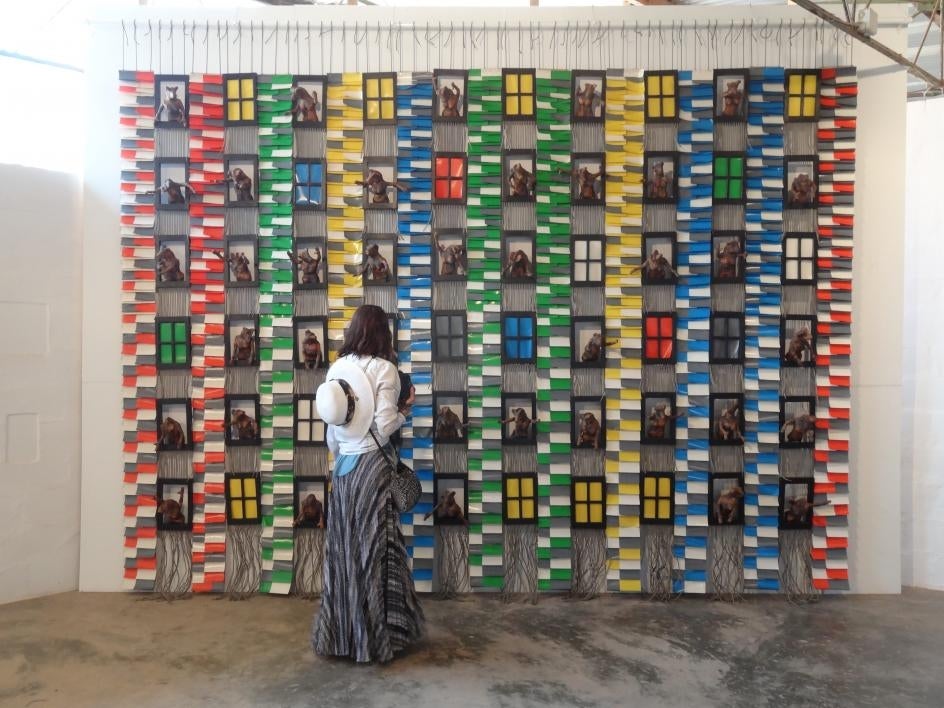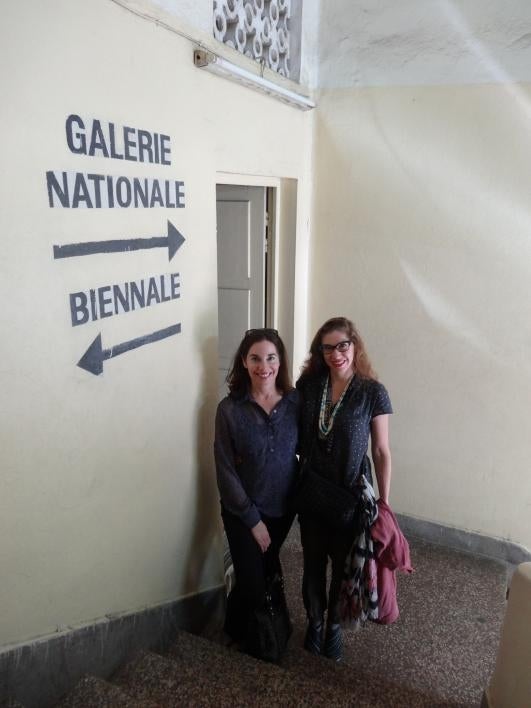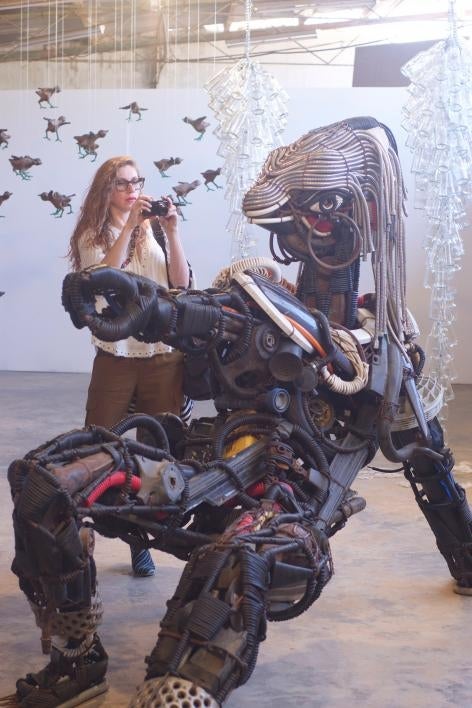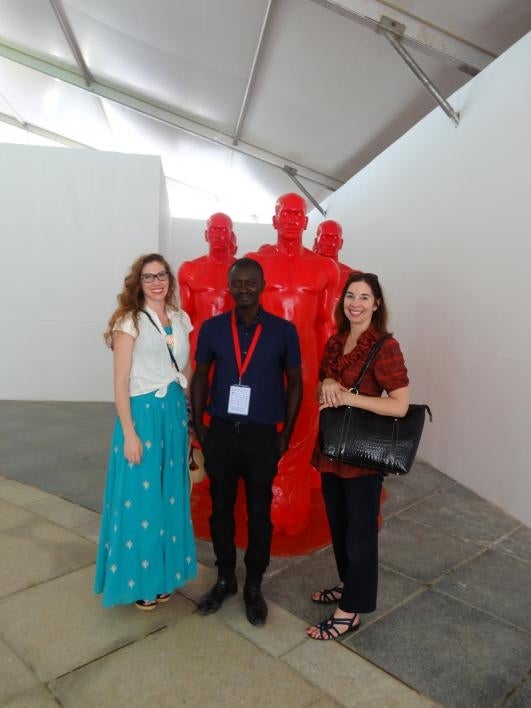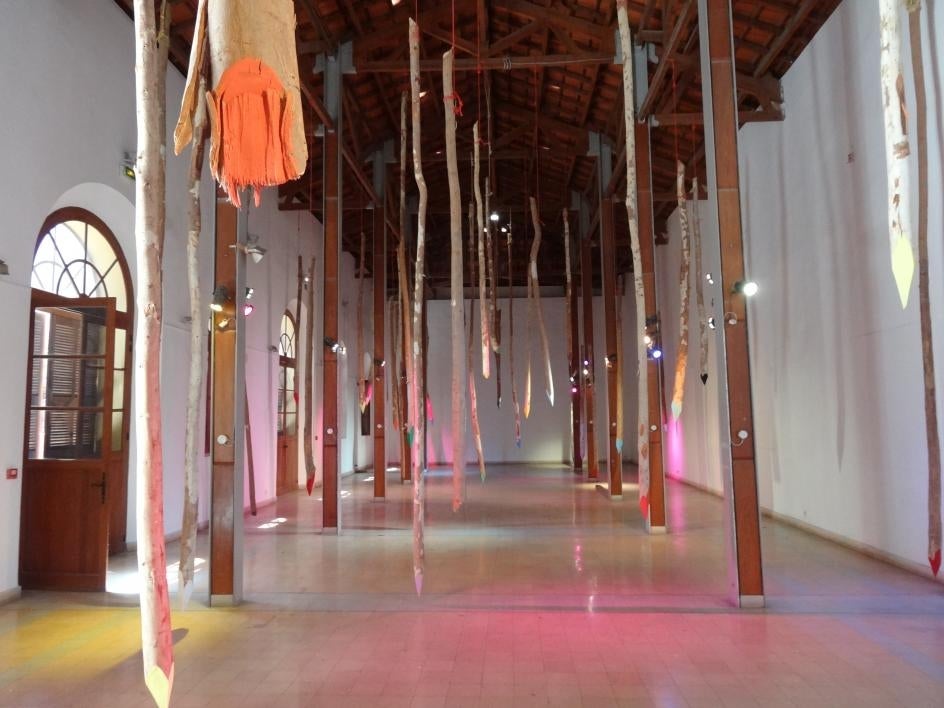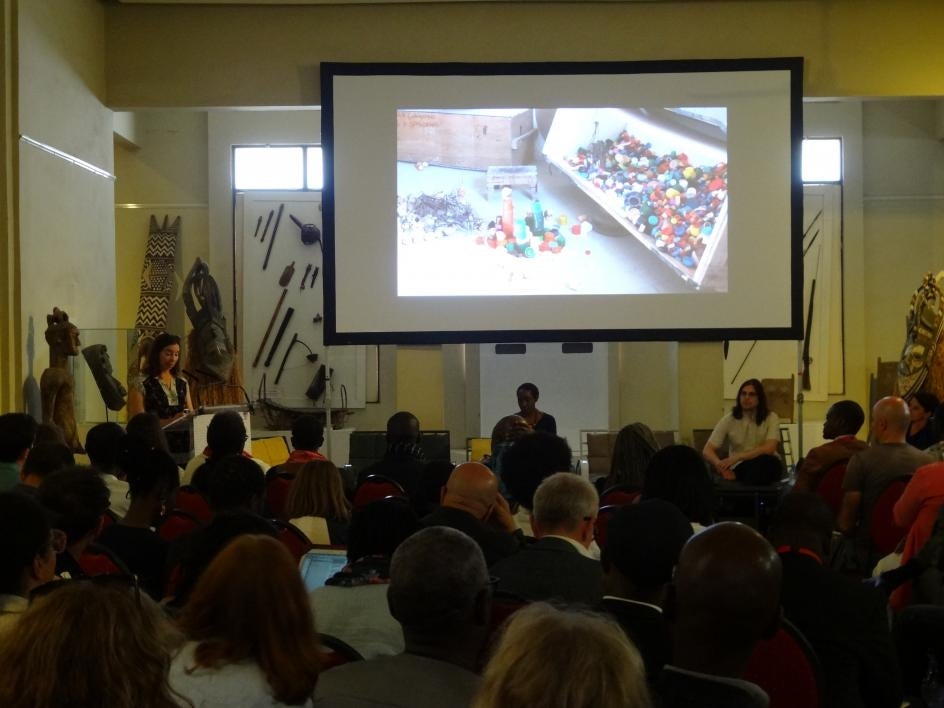Director’s research in Senegal inspires School of Art’s plan for more global learning

Graffiti artist Docta works on a new mural at the Hotel Novotel during the Dak’Art Biennial. Photo by Ashley Czajkowski
In Dakar, Senegal, you can find a gas station or a hair salon turned into a space for seeing art. A dance club becomes an exhibition venue. A mixed-media installation pops up in a traffic circle. Old cellphones find new life as textured artwork. These transformations happen every two years during the Dak'Art Biennale of Contemporary African Art — one of the largest biennials in the world, and the longest-running arts biennial in Africa.
The 13th edition of Dak’Art, which was held in May, included a special talk from Joanna Grabski, director of the School of Art in Arizona State University's Herberger Institute for Design and the Arts.
“The entire city becomes engaged for this period of time with art, and it’s really transformative to see,” Grabski said. “It has implications for how we engage with art here.”
This year marks the 20th anniversary of Grabski’s relationship with Dakar. She has been conducting research with artists and art collectors since 1998, and she has written a book about the city’s art scene and place in the global art world: “Art World City: The Creative Economy of Artists and Urban Life in Dakar” was published last summer.
“It was really touching and really wonderful to go back to a country where I worked for 20 years,” Grabski said. “I was able to share my book, which was a product of many generosities of people who informed the story I was telling, and it was great to be able to reconnect with those individuals.”
In her book, Grabski outlines how the biennial plays a vital role in the city’s art scene.
The alternative venues and much of the local art exhibited during the biennial are part of Dak’Art Off, offsite exhibitions scattered throughout the city’s neighborhoods and organized by artists, gallerists and individuals active in Dakar’s art scene. Grabski said there were more than 300 exhibitions happening in the city, and she and ASU School of Art Associate Director Forrest Solis, who also traveled to Africa for the biennial, went to at least six events each day.
“The Off sites are really important to the city itself because it’s where residents come forward to show the art they make,” Grabski said. “It means everybody gets to participate, and there’s something really lovely about that level of success. It tells me there are many kinds of art that can be out there, and they can all coexist. I think that’s an important message for us.”
From art historians who do research internationally to faculty artists who work across the globe to students studying abroad, the School of Art already taps into the global art world, and Grabski said the visit to Dakar is the first step in expanding the school’s global focus.
“I think that we have a lot to learn from artists who are making art in other parts of the world,” she said, “especially about the publics that they access, how they work with communities, their reasons for making art and how they use technology — and by that I mean any kind of indigenous knowledge and new knowledge. I think asking questions helps us better understand our own practices.”
Solis and photography alumna Ashley Czajkowski interviewed and recorded artists discussing their work and the art-making process. Solis said they hope to share those stories and what they learned in Dakar with students this fall.
“One of the Herberger Institute’s biggest initiatives is engaging community and the arts,” Solis said. “We’re seeing that in a place where this engagement is thriving and looking at how we can take that away and bring some of those interventions here.”
Grabski said she wants the global initiatives in the school to lead to more off-site experiential learning for students. She also said this global focus will provide alumni a platform to engage in new conversations about their work and will allow faculty to scale their work.
While in Africa, Solis and Czajkowski also interviewed mothers from the region for Creative Push, an ongoing multimedia visual-art and oral-history project that explores birth.
“It was fascinating and expanded my thinking about this subject,” Solis said.
In addition to scaling work and learning from artists around the world, Grabski said she plans to eventually create a global art school alliance.
“What I’d like to do is to bring together different interlocutors from different art schools around the world and create a conversation about global art practice at the level of art school pedagogy. We have so much to learn from each other,” Grabski said. “We need a platform for larger conversations about being an artist on this planet.”
More Arts, humanities and education

ASU workshop trains educators, professionals from marginalized communities in disaster science
As devastating as hurricanes can be to anyone caught in their paths, they strike marginalized communities even harder.To address…

ASU’s Humanities Institute announces 2024 book award winner
Arizona State University’s Humanities Institute (HI) has announced “The Long Land War: The Global Struggle for…

Retired admiral who spent decades in public service pursuing a degree in social work at ASU
Editor’s note: This story is part of coverage of ASU’s annual Salute to Service.Cari Thomas wore the uniform of the U.S. Coast…
